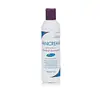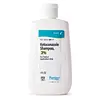What's inside
What's inside
 Benefits
Benefits

 Concerns
Concerns

 Ingredients Side-by-side
Ingredients Side-by-side

Zinc Pyrithione 2%
AntiseborrhoeicWater
Skin ConditioningLauryl Glucoside
CleansingCoco-Glucoside
CleansingAcrylates Copolymer
Panthenol
Skin ConditioningPentylene Glycol
Skin ConditioningGlycerin
HumectantSucrose Cocoate
EmulsifyingDisodium Cocoyl Glutamate
CleansingSodium Cocoyl Glycinate
CleansingBehenyl Alcohol
EmollientSucrose Stearate
EmollientCetyl Palmitate
EmollientSodium Cocoyl Glutamate
Cleansing1,2-Hexanediol
Skin ConditioningSodium Hydroxide
BufferingCaprylyl Glycol
EmollientSodium Chloride
MaskingZinc Pyrithione 2%, Water, Lauryl Glucoside, Coco-Glucoside, Acrylates Copolymer, Panthenol, Pentylene Glycol, Glycerin, Sucrose Cocoate, Disodium Cocoyl Glutamate, Sodium Cocoyl Glycinate, Behenyl Alcohol, Sucrose Stearate, Cetyl Palmitate, Sodium Cocoyl Glutamate, 1,2-Hexanediol, Sodium Hydroxide, Caprylyl Glycol, Sodium Chloride
 Reviews
Reviews

Ingredients Explained
These ingredients are found in both products.
Ingredients higher up in an ingredient list are typically present in a larger amount.
Chances are, you eat sodium chloride every day. Sodium Chloride is also known as table salt.
This ingredient has many purposes in skincare: thickener, emulsifier, and exfoliator.
You'll most likely find this ingredient in cleansers where it is used to create a gel-like texture. As an emulsifier, it also prevents ingredients from separating.
There is much debate on whether this ingredient is comedogenic. The short answer - comedogenic ratings don't tell the whole story. Learn more about comegodenic ratings here.
The concensus about this ingredient causing acne seems to be divided. Research is needed to understand if this ingredient does cause acne.
Scrubs may use salt as the primary exfoliating ingredient.
Learn more about Sodium ChlorideSodium Hydroxide is also known as lye or caustic soda. It is used to adjust the pH of products; many ingredients require a specific pH to be effective.
In small amounts, sodium hydroxide is considered safe to use. However, large amounts may cause chemical burns due to its high alkaline.
Your skin has a natural pH and acid mantle. This acid mantle helps prevent harmful bacteria from breaking through. The acid mantle also helps keep your skin hydrated.
"Alkaline" refers to a high pH level. A low pH level would be considered acidic.
Learn more about Sodium HydroxideWater. It's the most common cosmetic ingredient of all. You'll usually see it at the top of ingredient lists, meaning that it makes up the largest part of the product.
So why is it so popular? Water most often acts as a solvent - this means that it helps dissolve other ingredients into the formulation.
You'll also recognize water as that liquid we all need to stay alive. If you see this, drink a glass of water. Stay hydrated!
Learn more about Water